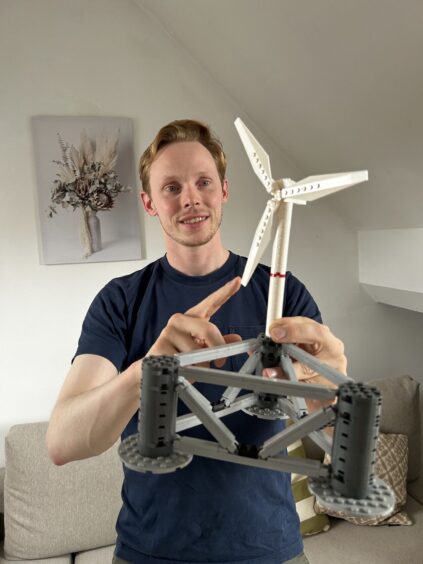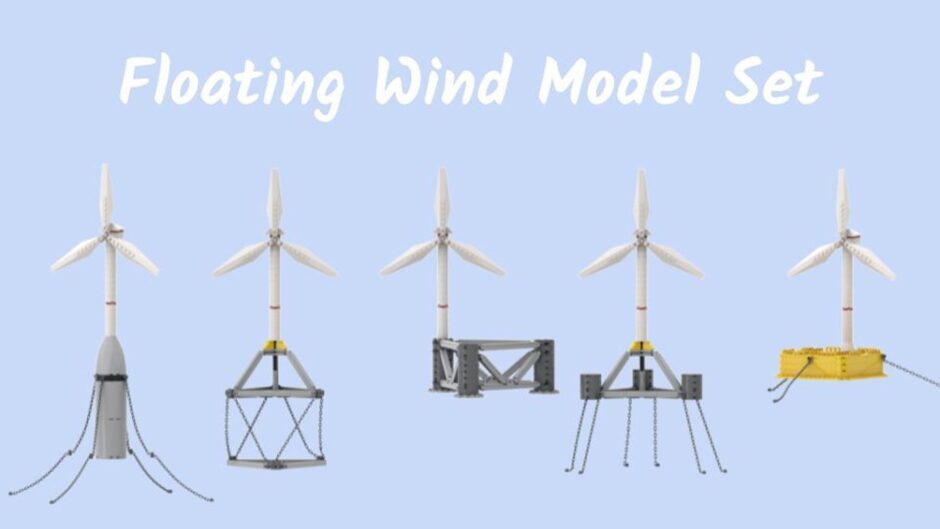
Floating offshore wind turbines made of Lego have been issued to inspire the next generation of renewable energy engineers.
Belgium-based non-profit organisation OffshoreWind4Kids has released five models made from building blocks based on five different types of floating platforms.
The organisation offers several kinds of model wind turbines, but director of OffshoreWind.io and OffshoreWind4Kids Dr Ir William Beuckelaers said that the Lego models aim to provide a portable option to provide an easier way to demonstrate how floating turbines work.
“We were tinkering with the idea of making something smaller, and then the idea of building blocks and Legos came to mind.”
Featuring rotating blades and stabilising bases, the initial batch are made from a mixture of new and used Lego bricks and non-branded building blocks.
The first model he designed was the semi-submersible design, based on several projects, including Kincardine off the coast of Aberdeen and Portugal’s Windfloat Atlantic.
“We did a site visit to the Golfe de Lyon floating project that is currently under construction in France with the students of the 2024 Floating Wind Challenge. That’s also the inspiration for why we started off developing a semi sub model,” Beuckelaers said.
The suspended counterweight model is similar to the TetraSpar design put forward by Stiesdal.
The tension leg platform uses a design based on three foundations used by the Provence Grand Large project in the south of France.
The barge model takes its inspiration from the Floatgen demonstrator project off the coast of Le Croisic in France.
Finally, the spar-buoy design is based on the Hywind Scotland wind farm, the first floating offshore wind farm in the world, and Norway’s Hywind Tampen, the largest currently operating.
Each of the five designs offer aspiring renewable energy engineers the chance to learn about the mechanics and design of floating wind turbines.
“You can see that we try to really get the engineering as close as real life as possible,” Beuckelaers said.
“You learn a lot by building it, why these structures are so stable. You also learn a little bit about those projects.”
A civil engineer by training, having received his PhD at Oxford, Beuckelaers designed the models to replicate the complexities of real floating wind turbines.
“It’s not really straightforward to design these because you’re dealing with a lot of triangular shapes. You have to deal with complications from trying to make triangular structures within the constraints of what is possible with Legos.
“We had to really think very carefully about the connections that we used to put everything together.
“And one of the things that I really wanted to make sure is that everything is also really solid, to showcase the civil engineering behind it.”
Lego has proven a popular medium for creating models of energy infrastructure and often their appeal is not just limited to youngsters. One man used Lego bricks to create a scale replica Heerema’s Thialf semi-submersible crane vessel.
It took seven years to create the 4 meters by 1.75m one-to-50-scale replica of the SSCV
Recommended for you


 © Supplied by OffshoreWind4Kids
© Supplied by OffshoreWind4Kids